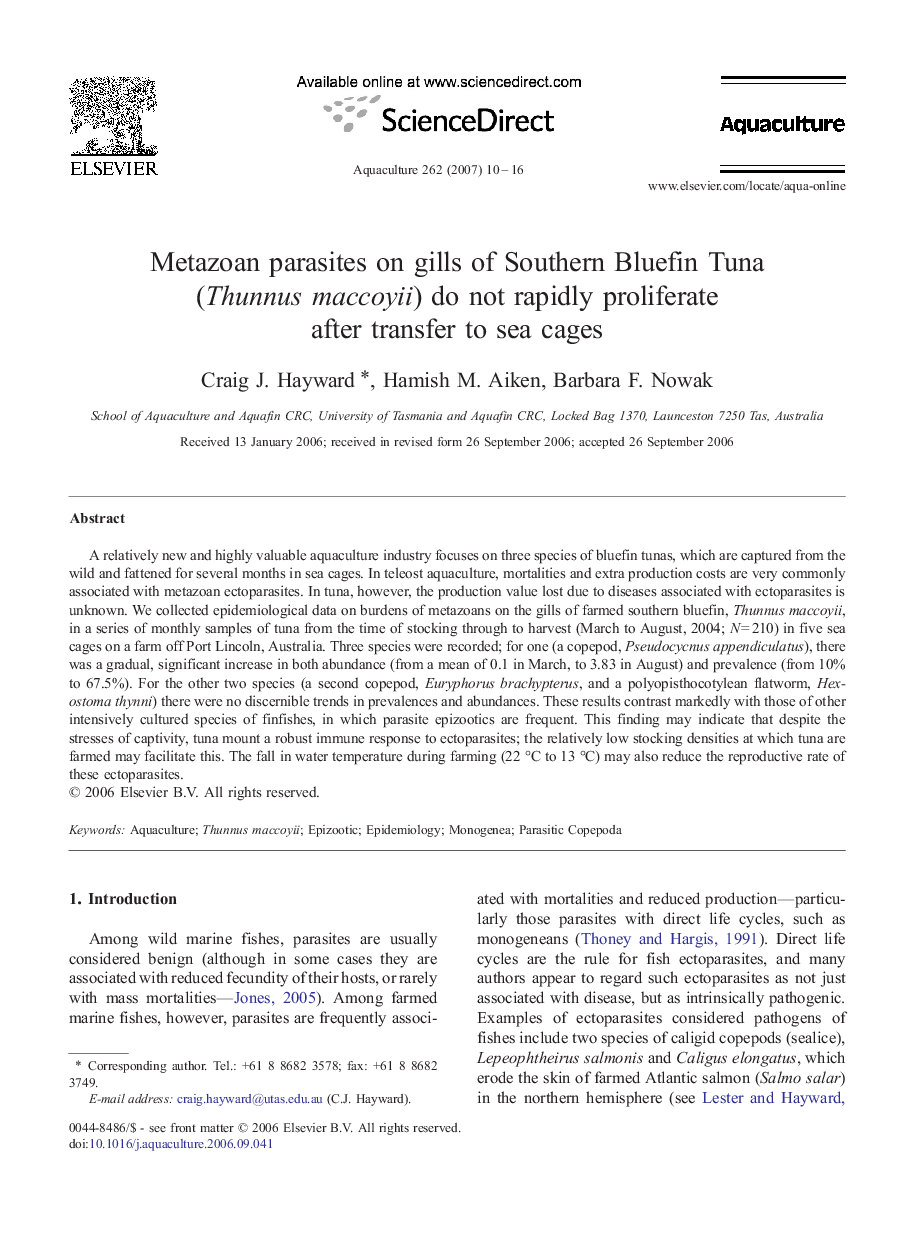| Article ID | Journal | Published Year | Pages | File Type |
|---|---|---|---|---|
| 2425692 | Aquaculture | 2007 | 7 Pages |
A relatively new and highly valuable aquaculture industry focuses on three species of bluefin tunas, which are captured from the wild and fattened for several months in sea cages. In teleost aquaculture, mortalities and extra production costs are very commonly associated with metazoan ectoparasites. In tuna, however, the production value lost due to diseases associated with ectoparasites is unknown. We collected epidemiological data on burdens of metazoans on the gills of farmed southern bluefin, Thunnus maccoyii, in a series of monthly samples of tuna from the time of stocking through to harvest (March to August, 2004; N = 210) in five sea cages on a farm off Port Lincoln, Australia. Three species were recorded; for one (a copepod, Pseudocycnus appendiculatus), there was a gradual, significant increase in both abundance (from a mean of 0.1 in March, to 3.83 in August) and prevalence (from 10% to 67.5%). For the other two species (a second copepod, Euryphorus brachypterus, and a polyopisthocotylean flatworm, Hexostoma thynni) there were no discernible trends in prevalences and abundances. These results contrast markedly with those of other intensively cultured species of finfishes, in which parasite epizootics are frequent. This finding may indicate that despite the stresses of captivity, tuna mount a robust immune response to ectoparasites; the relatively low stocking densities at which tuna are farmed may facilitate this. The fall in water temperature during farming (22 °C to 13 °C) may also reduce the reproductive rate of these ectoparasites.
